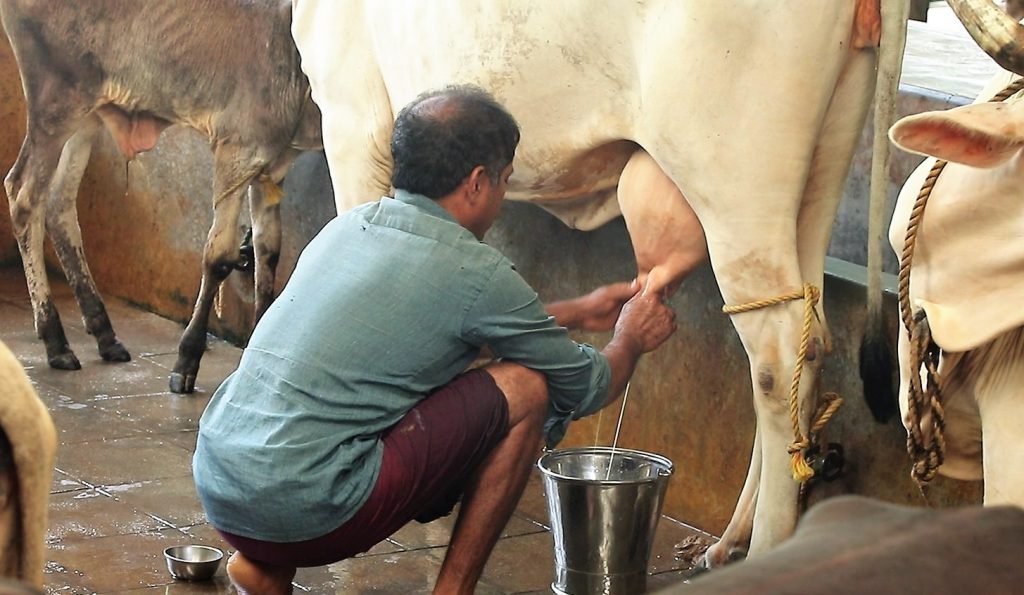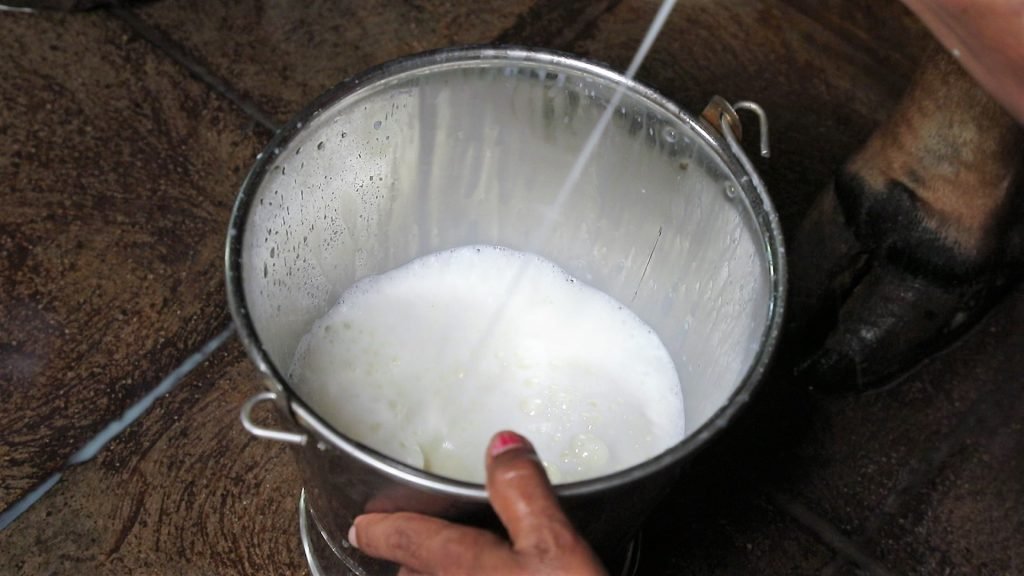Fresh Cow Milk



Fresh Cow Milk Composition
Fresh cow milk is a rich resource of nutrition, though the composition of milk varies to a certain extent depending on the cow breed, locality, food of the cow, etc. The milk has four broad components like water, fat, protein and lactose (sugar). The minor components of milk comprise enzymes, minerals, vitamins, and dissolved gases. Cow milk is less rich in lactose, fat content, and protein, which makes it safe and healthy. The average composition of raw cow milk is about 87% water, 4% fat and 9% non-fat solids comprising milk sugar, proteins, immune factors, vitamins, etc. Traditionally, fresh cow milk is treated as superior to processed milk and used for offerings in religious practices.
Why is Fresh Cow Milk Nutritious?
It is a rich source of nutritionally superior proteins, grouped into two categories, casein and whey proteins, of which casein constitutes the major share. Most of the proteins in milk are categorized as casein, which has a number of health benefits. Whey proteins are primarily facilitated muscle growth and maintenance and believed to decrease blood pressure and improve the mood.
Milk fat represents one of the most complex natural fats, made of about 400 different types of fatty acids. Polyunsaturated fats account for about 2.3% of the total fat content of fresh cow milk. The ruminant trans fats are another category of milk fats including vaccenic acid and Conjugated Linoleic Acid (CLA). CLA is the most studied fat from the milk and has been found to be associated with several health benefits.
Carbohydrates account for about 5% of the milk, and lactose, popularly known as the milk sugar makes the bulk of it. Many people are intolerant to lactose and develop an allergic response. The main symptoms include Flatulence, Bloating, and Diarrhea. But this problem can be tackled to a great extent by consuming fresh cow milk, as the friendly bacteria present in it produce the lactose-digesting enzyme lactase and compensate for the inability of the individual to digest lactose. Lactose has an advantage over other sugars as far as diabetics are concerned. The Glycemic index (ability to shoot up insulin level)of lactose is pretty low and hence can be better tolerated by diabetics.
It is a resource of many vitamins and minerals. Vitamin B12, Riboflavin, and vitamin D are the major vitamins present in the milk. Calcium and Phosphorus are some of the prominent mineral components of the milk. Apart from these, the milk contains many other minerals like Sodium, Potassium, Zinc, Iron, Copper, Sulfates, Chlorine, Bicarbonates and Trace elements. Due to its high Calcium content fresh cow milk helps in maintaining the tone of the bones by sustaining bone mineral density, and avoiding the risk of Osteoporosis.
Hormones and enzymes are another set of beneficial components of the milk. Among the hormones insulin-like growth-factor 1 (IGF-1), is active in humans and is good for growth and development of young children. Amylase, Lipase, Catalase, Lactase, Phosphatase and Lactoperoxidase are some of the important enzymes present in fresh cow milk.
Help Us Now

Donate to Surabhivana Gaushala to save and protect Indian Cow Breeds.
All donations are exempt under Section 80G of the Income Tax Act, 1961. All donation receipts shall be mailed to the address given by the donor or may be collected in person, at request.
Click the below button to donate through credit cards/debit cards or Net Banking via Razor Pay.
